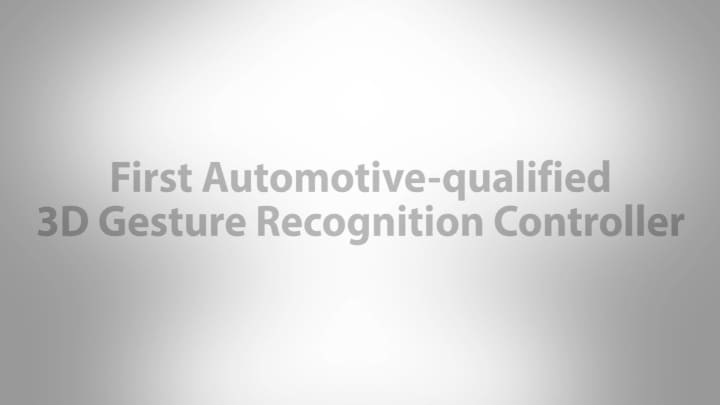Need Help?
Privacy PolicyLive Chat
GestIC® technology is a patented 3D sensor technology that utilizes an electric field (E-field) for advanced proximity sensing that can detect, track and classify a user’s hand or finger motion in free space. This technology allows you to create modern and user-friendly user interfaces quickly and easily for a variety of embedded applications.
E-field Basics
An E-field is generated by electrical charges and spread three-dimensionally around the surface carrying the electrical charge. Applying direct voltages (DC) to an electrode results in a constant electric field. Applying alternating voltages (AC) to the electrode causes the charges to vary over time and, thus, the field. When the charge varies sinusoidally with frequency (f), the resulting electromagnetic wave is characterized by wavelength λ = c/f, where c is the wave propagation velocity—in vacuum, the speed of light.

How Does GestIC Technology Work?
GestIC technology uses transmit (Tx) frequencies (f) in the range of 100 kHz, which reflect a wavelength of about three kilometers. This Tx wavelength is much larger than the range of electrode geometries that are typically less than 20 × 20 centimeters in size. Therefore, the magnetic component is practically zero and no wave propagation takes place. This results in a quasi-static electrical near field that can be used for sensing conductive objects such as the human body.
When a person’s hand or finger enters the sensing area, the electrical field distribution becomes distorted. The conductivity of the human body draws the field lines to the hand or finger, and they are shunted to ground. Figure 1 and Figure 2 show the influence of an earth-grounded body on the electric field. The proximity of the body causes a compression of the equipotential lines and shifts the receiver (Rx) electrode signal levels to a lower potential which is detected by one of our 3D gesture and motion tracking controllers with GestIC technology.
 Figure 1 – Equipotential Lines of an Undistorted E-Field
Figure 1 – Equipotential Lines of an Undistorted E-Field
 Figure 2 – Equipotential Lines of a Distorted E-Field
Figure 2 – Equipotential Lines of a Distorted E-Field
Sensing Electrodes
GestIC technology uses low-cost and thin-sensing electrodes made of any conductive material. It can be integrated invisibly behind the target device's housing so that the overall thickness of a product's industrial design is not increased. GestIC technology can even enable the reuse of existing conductive structures, such as a display's Indium Tin Oxide (ITO) coating, to provide a very cost-effective system solution.
Our MGC3030, MGC3130 and MGC3140 controllers typically use four receiver (Rx) electrodes to detect the origin of E-field variations caused by a user's hand. These electrode signals are processed by the device to calculate the hand position relative to the sensing area in x, y, z data points and to classify the movement pattern into gestures in real time. The on-chip Colibri Gesture Suite, which is an easy-to-use library of GestIC technology features, provides sophisticated Hidden Markov Model-based gesture recognition.
Examples of electrode materials include:
- Rigid Printed Circuit Board (PCB) electrodes
- Flexible Printed Circuit (FPC) electrodes
- Laser Catalyzer Plating (LCP) electrodes
- Laser Direct Structured (LDS) electrodes
- Conductive foils
- ITO coating

Ready to Start Designing with GestIC Technology?
First Automative-Qualified 3D Gesture Recognition Controller
